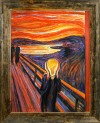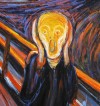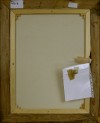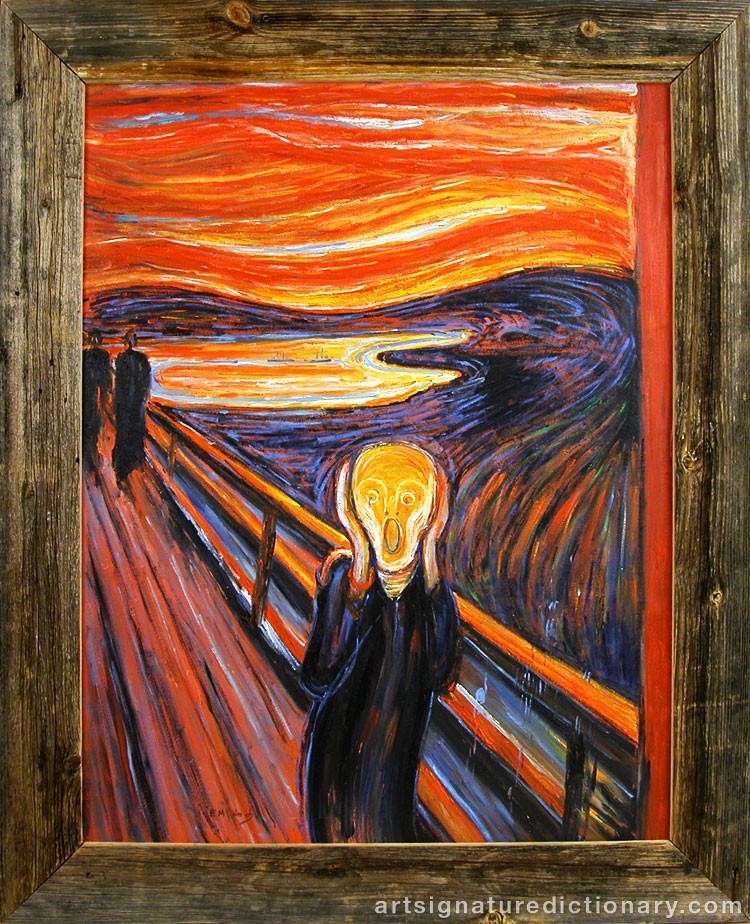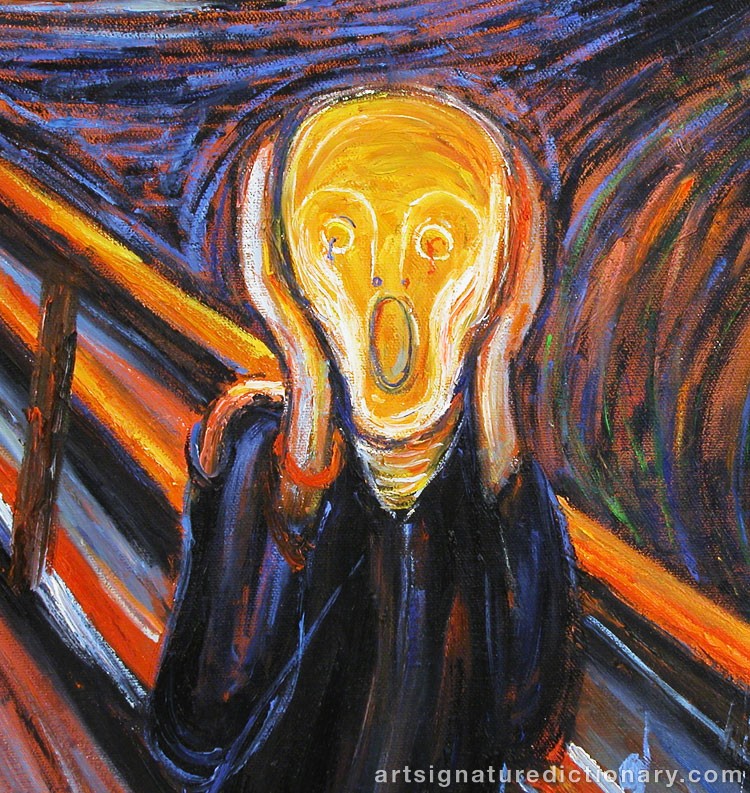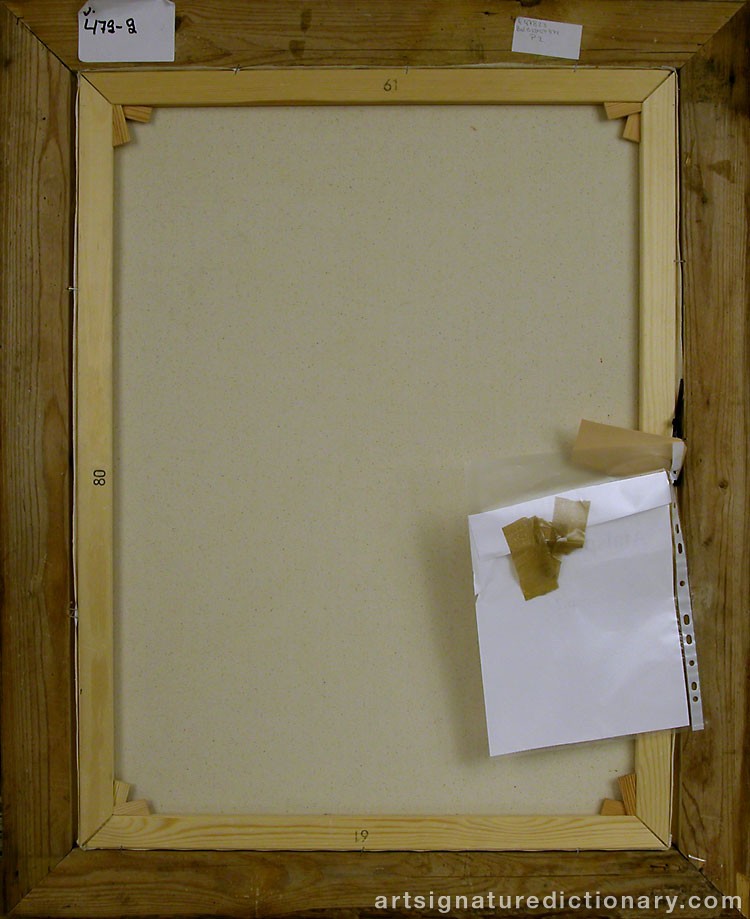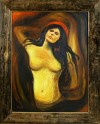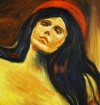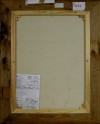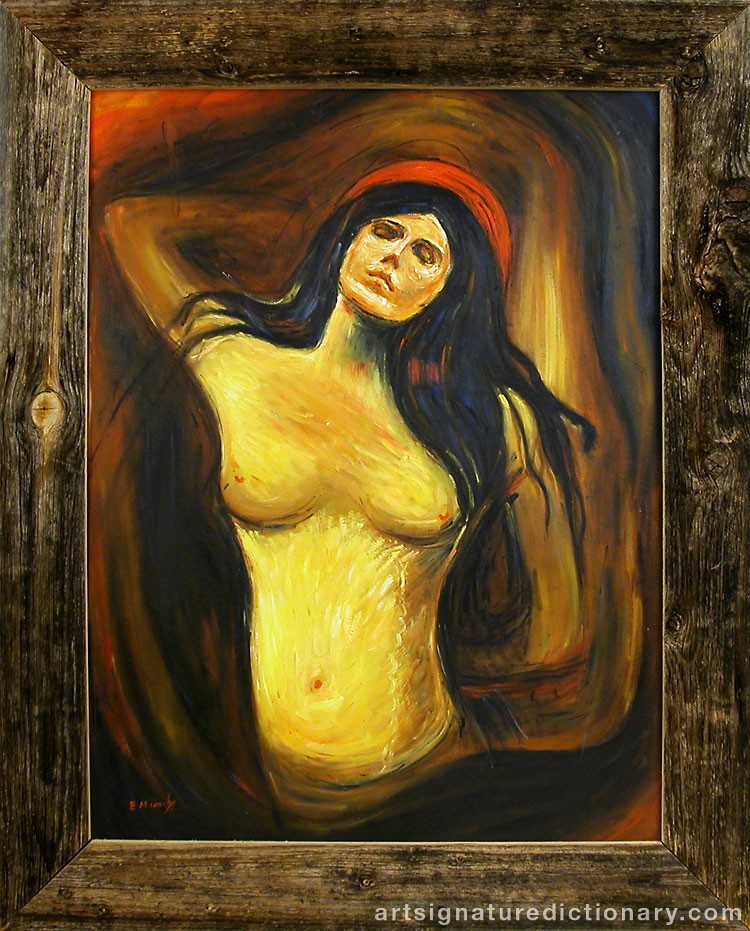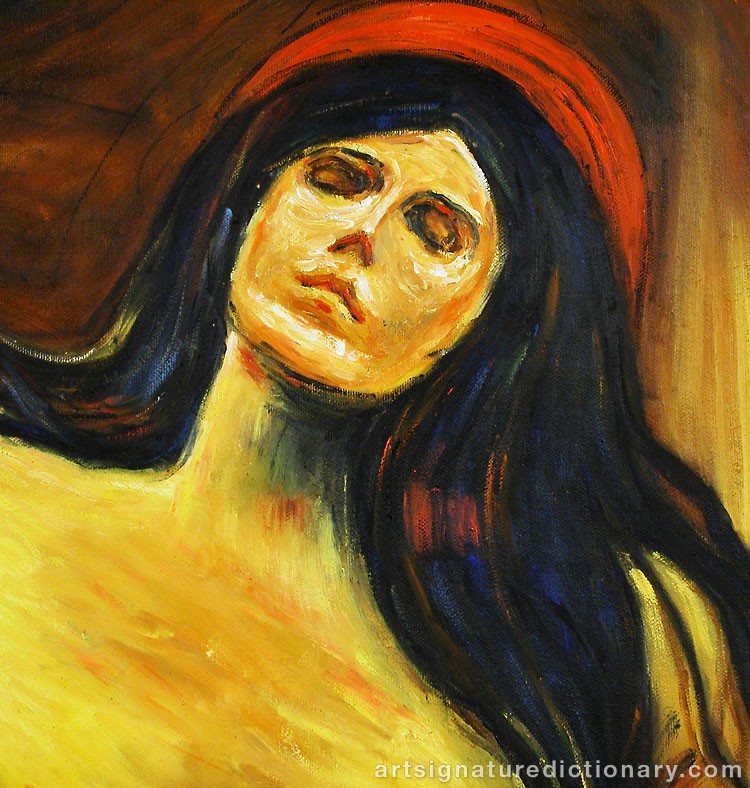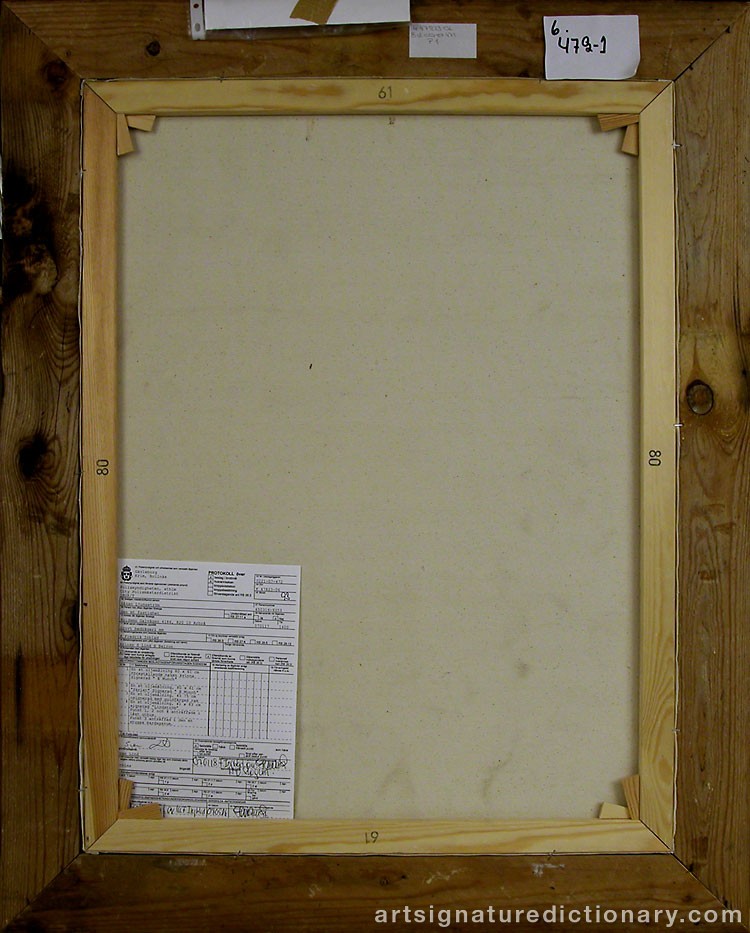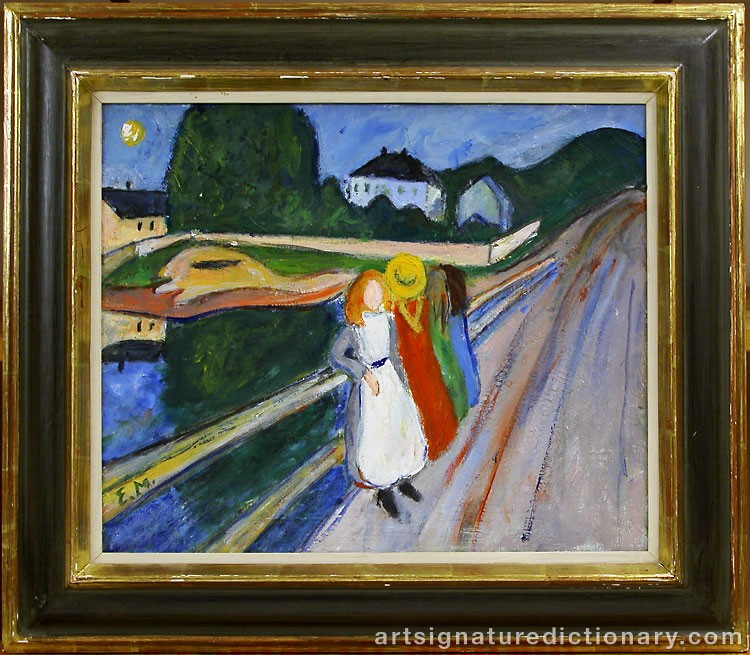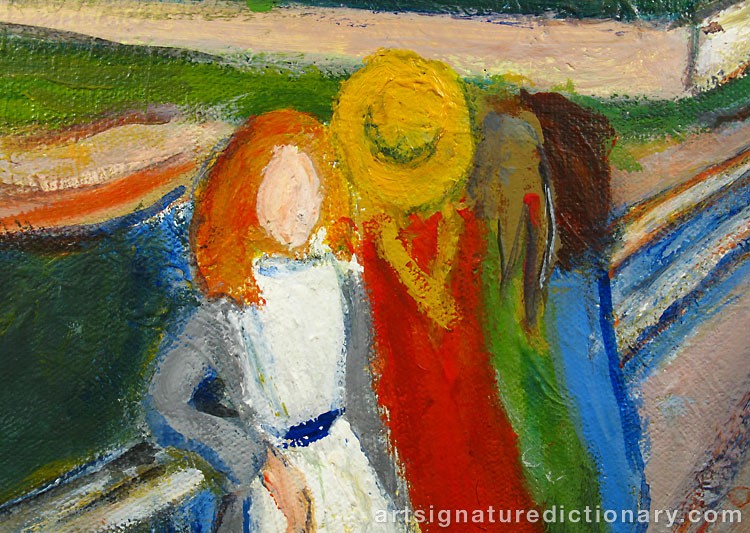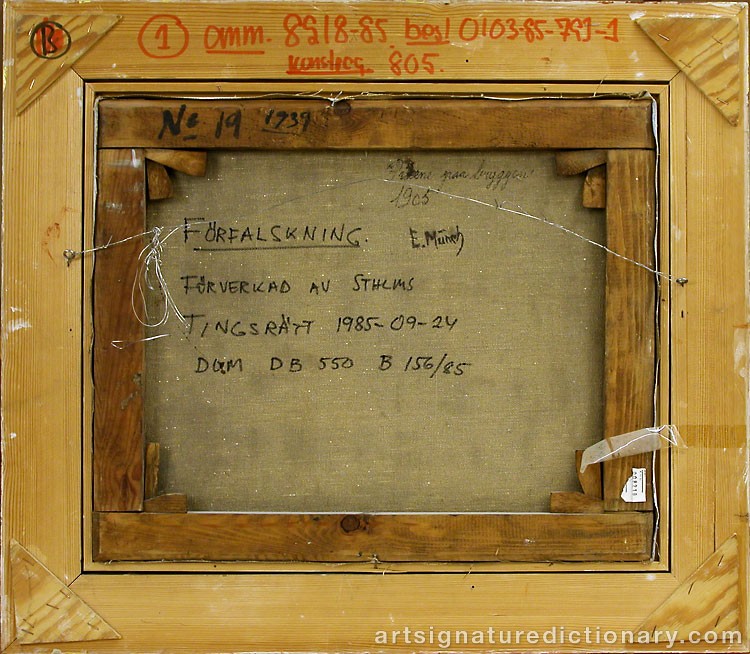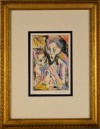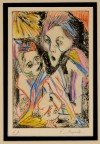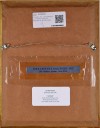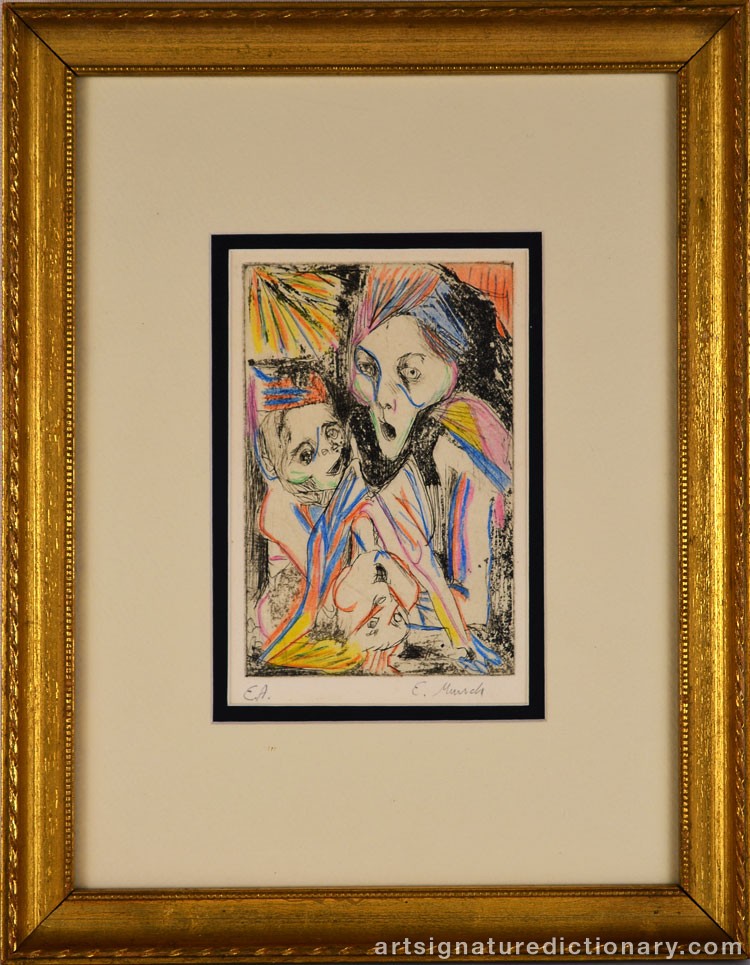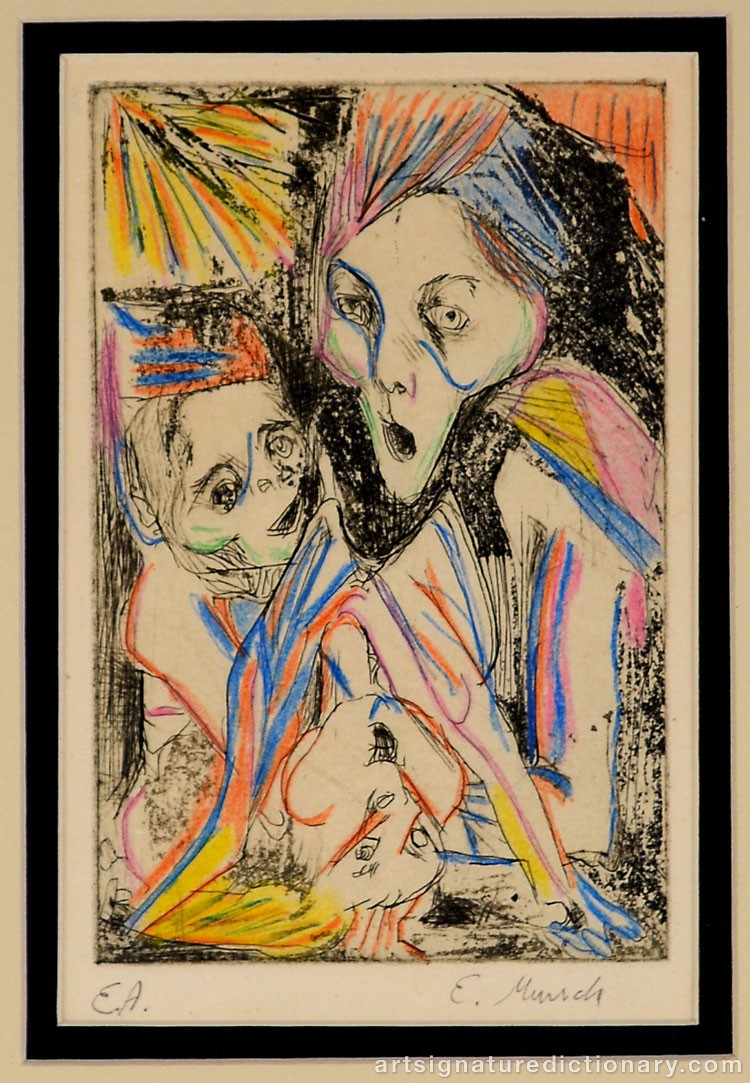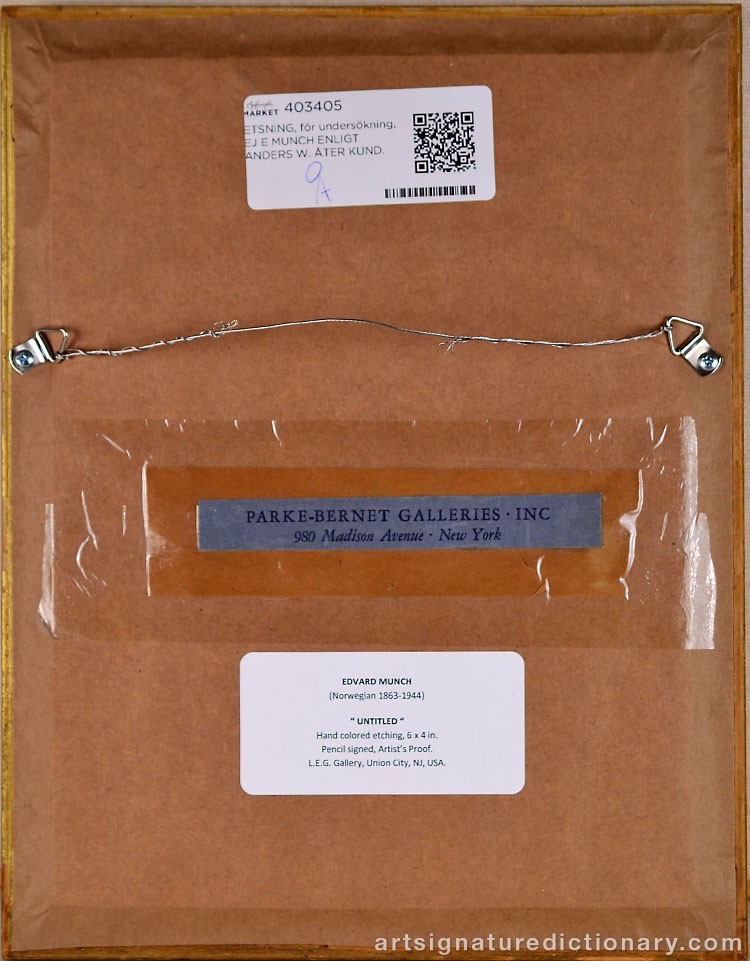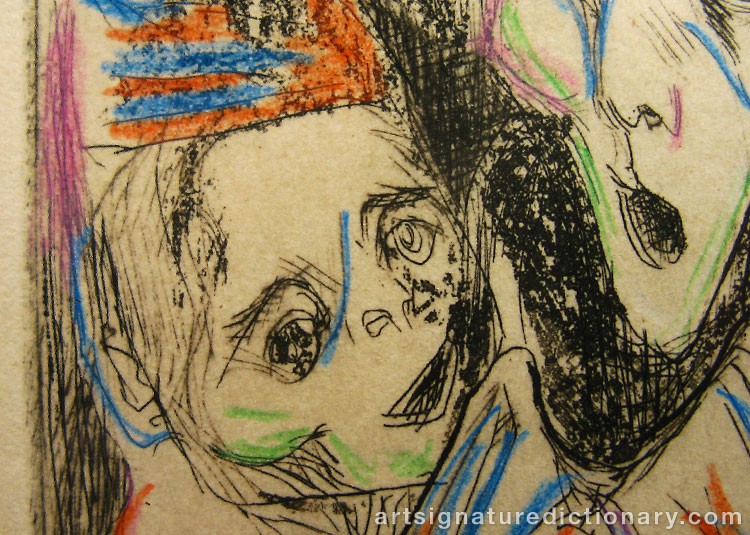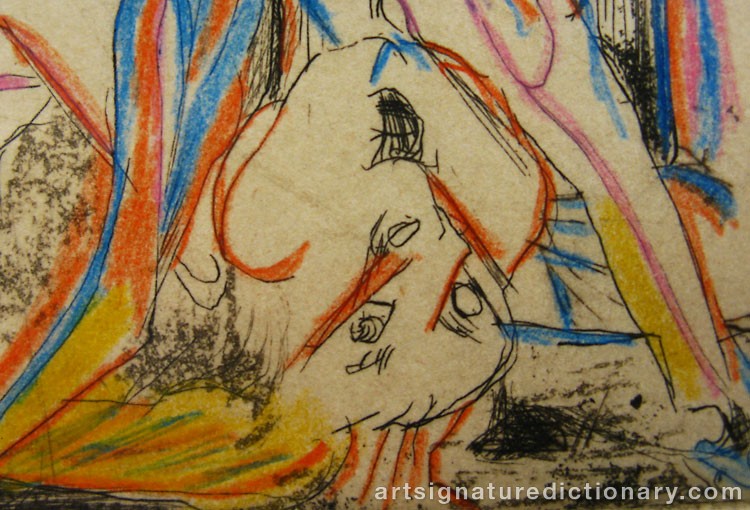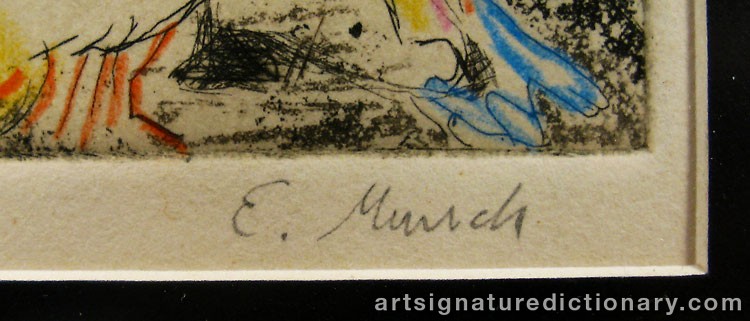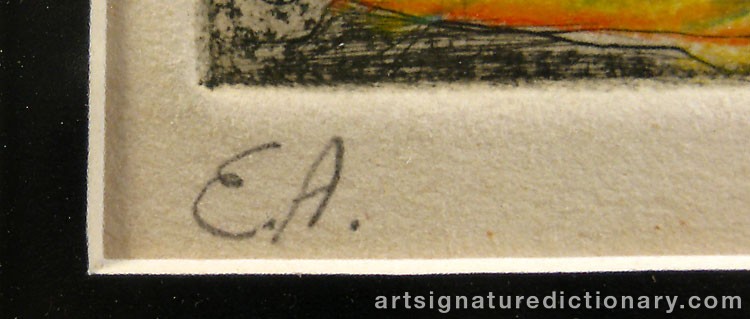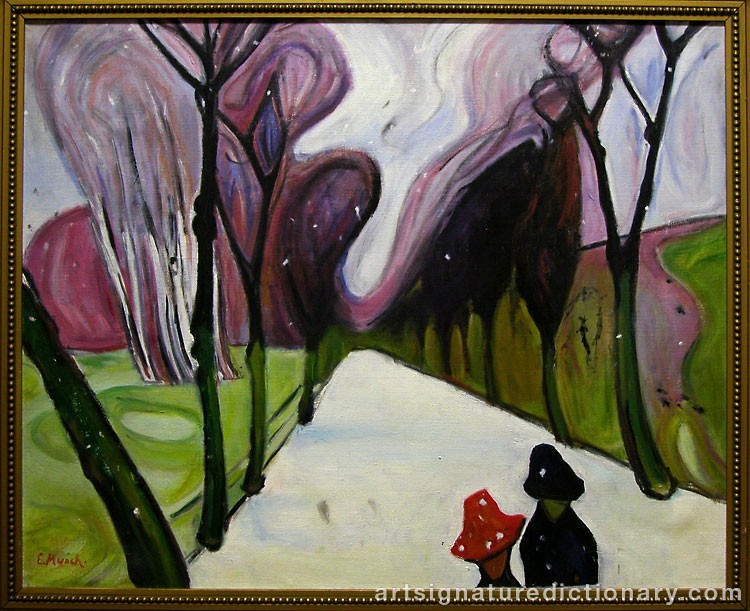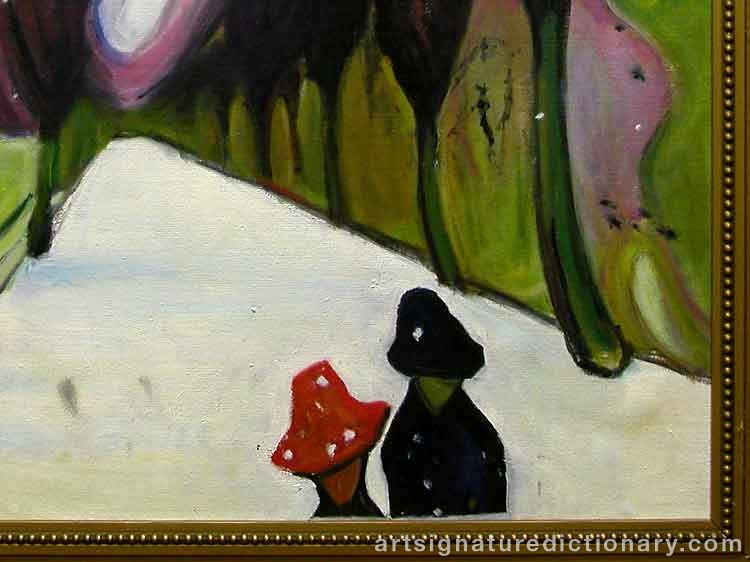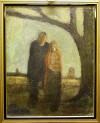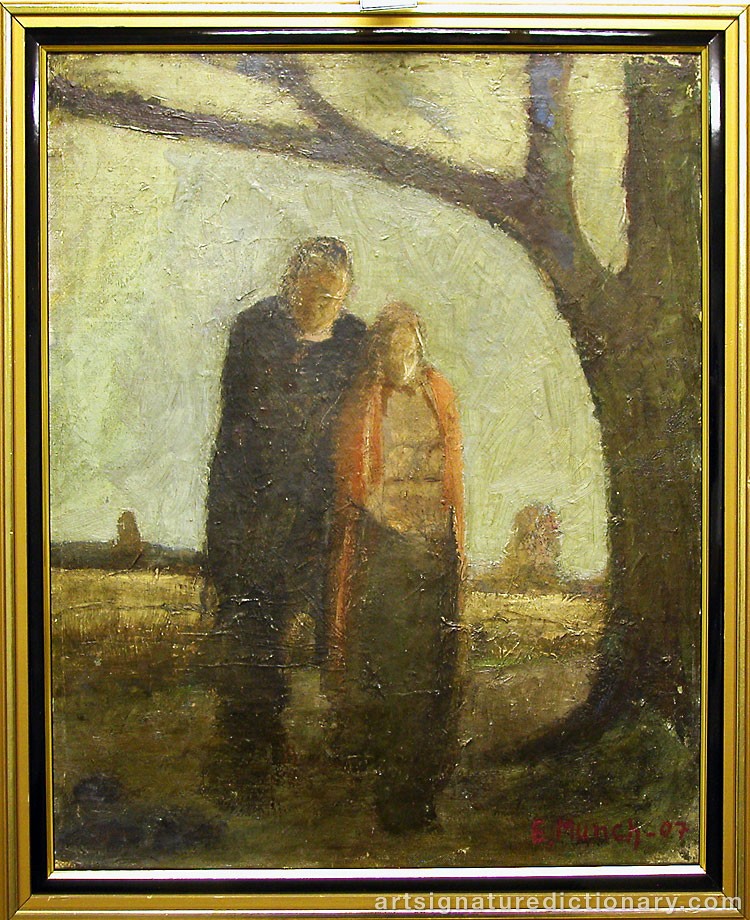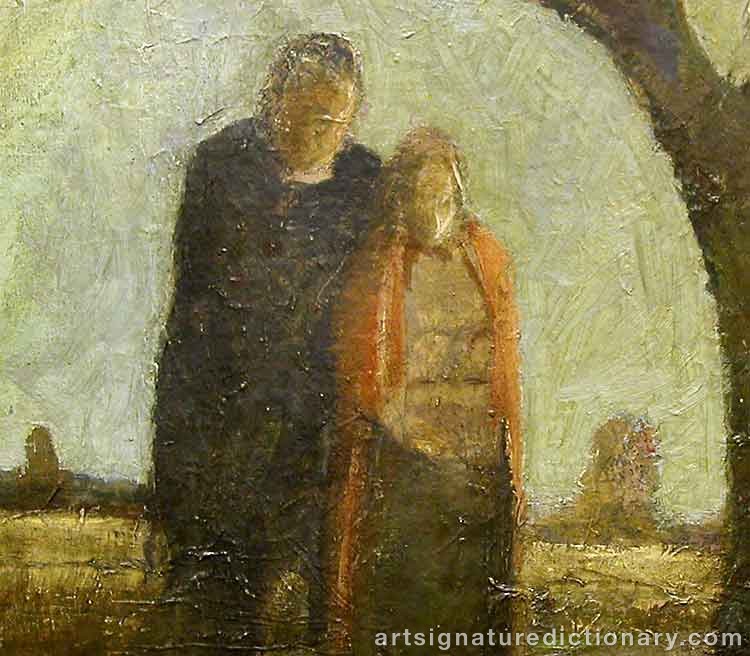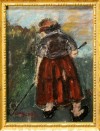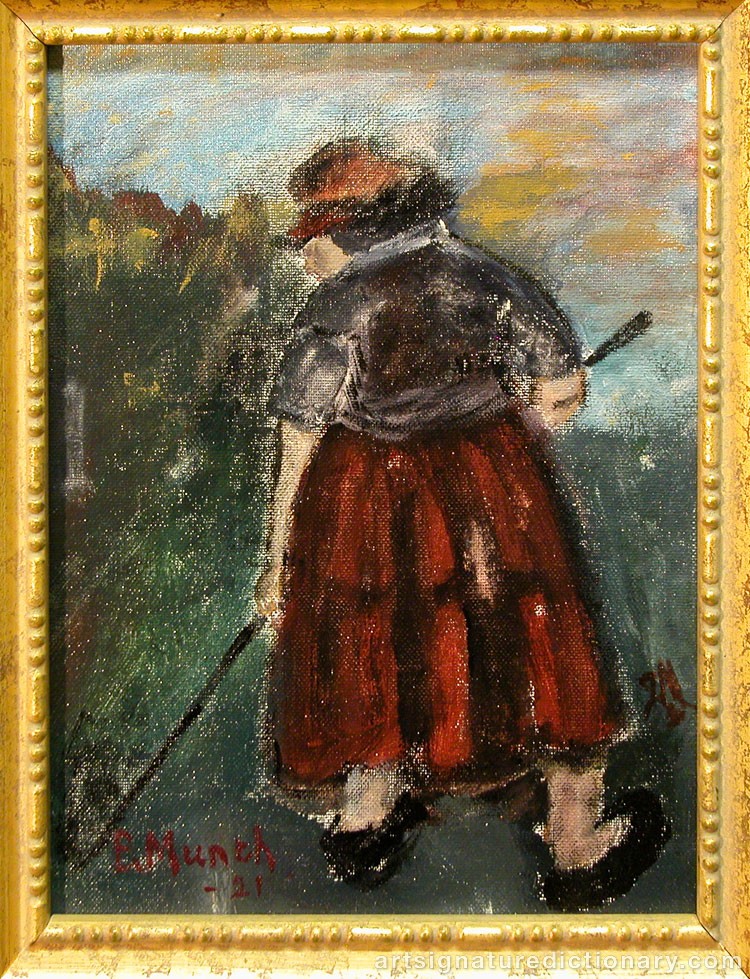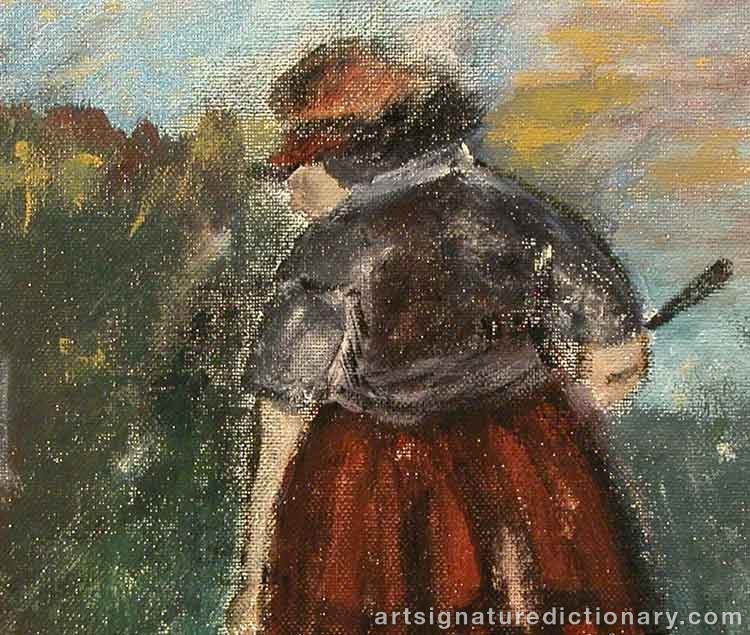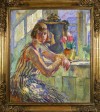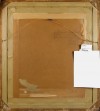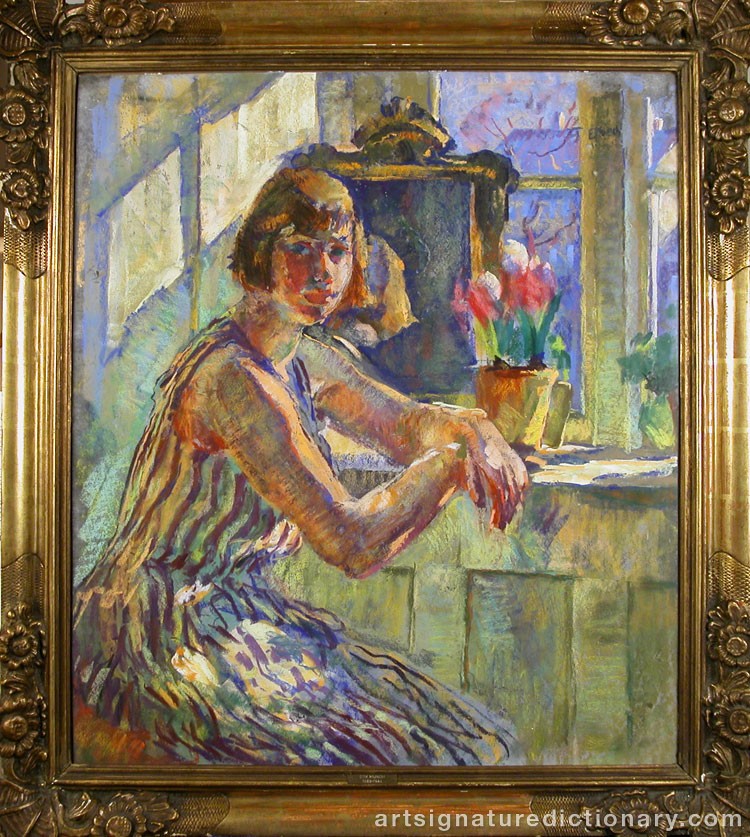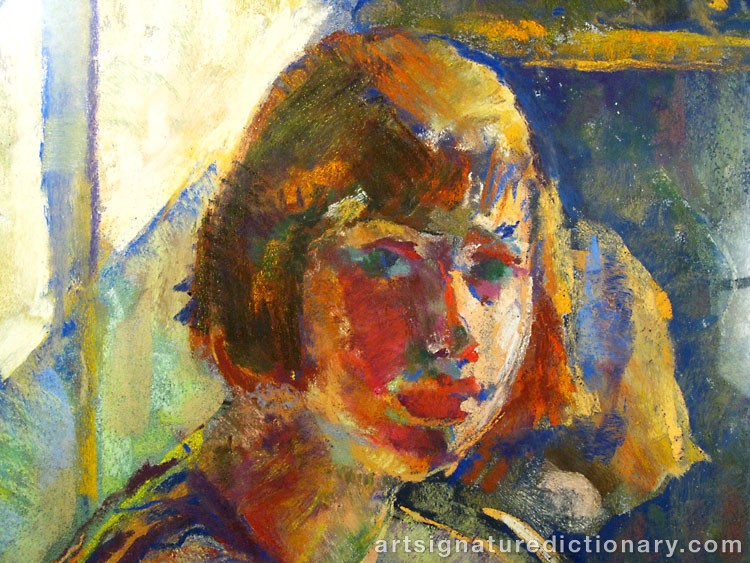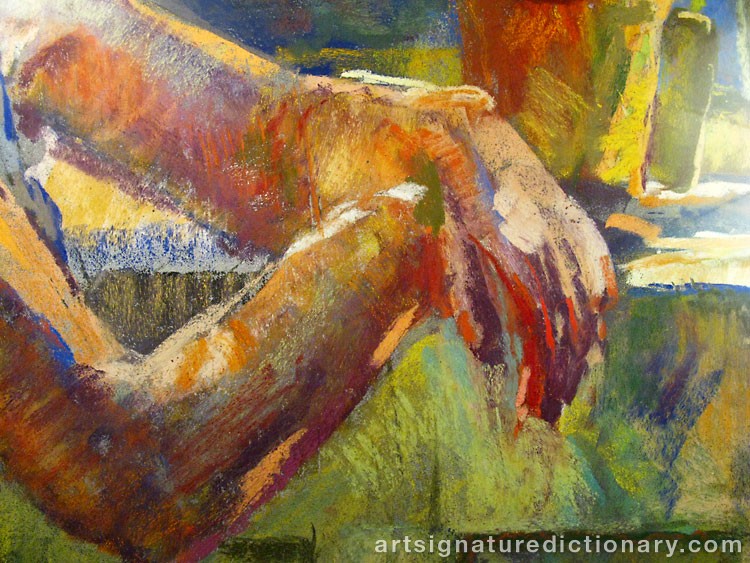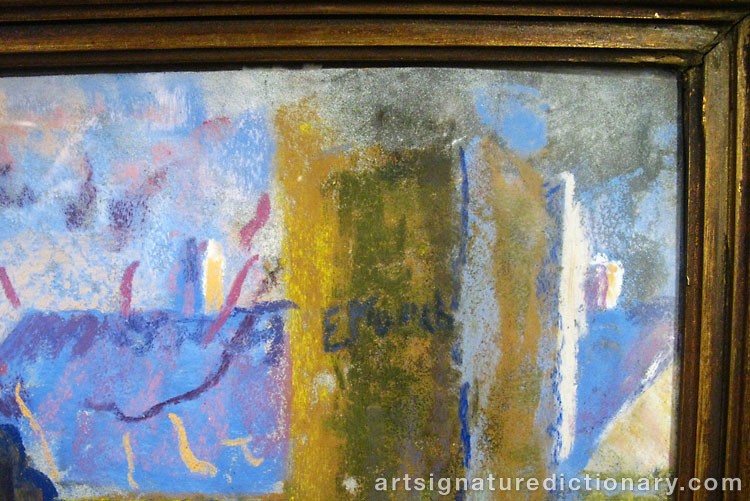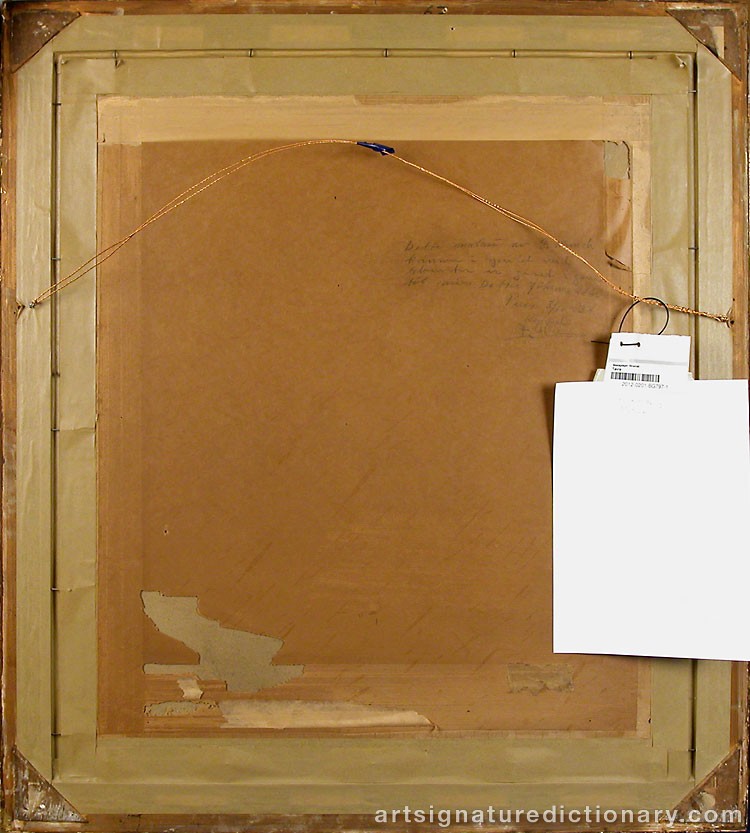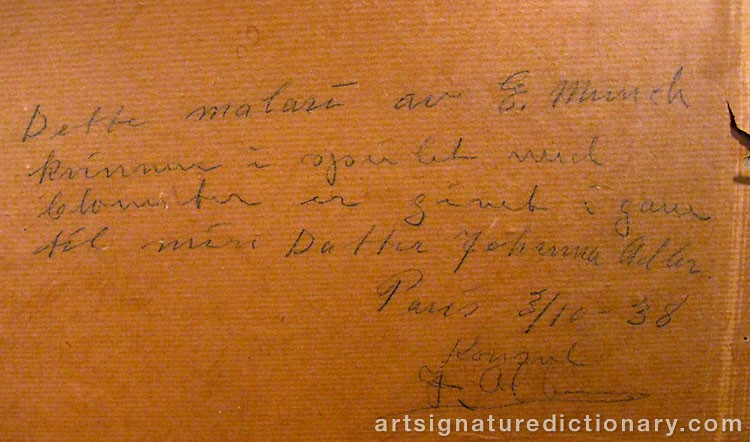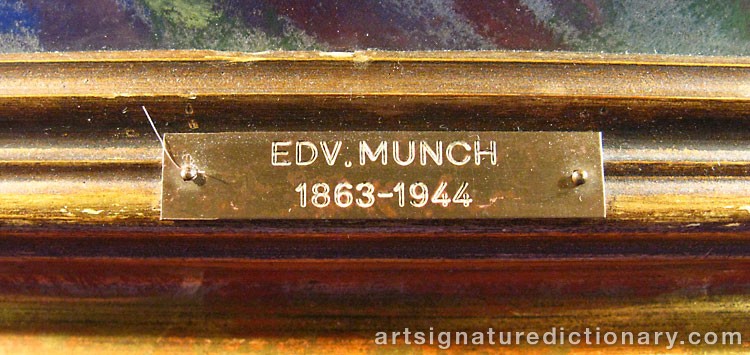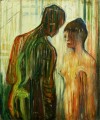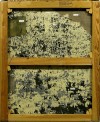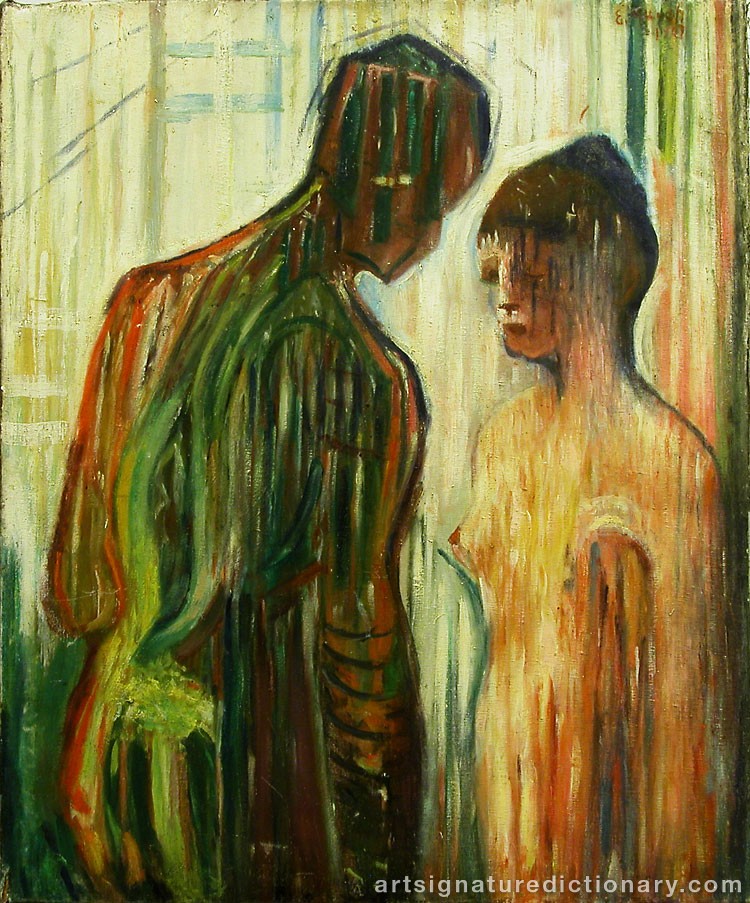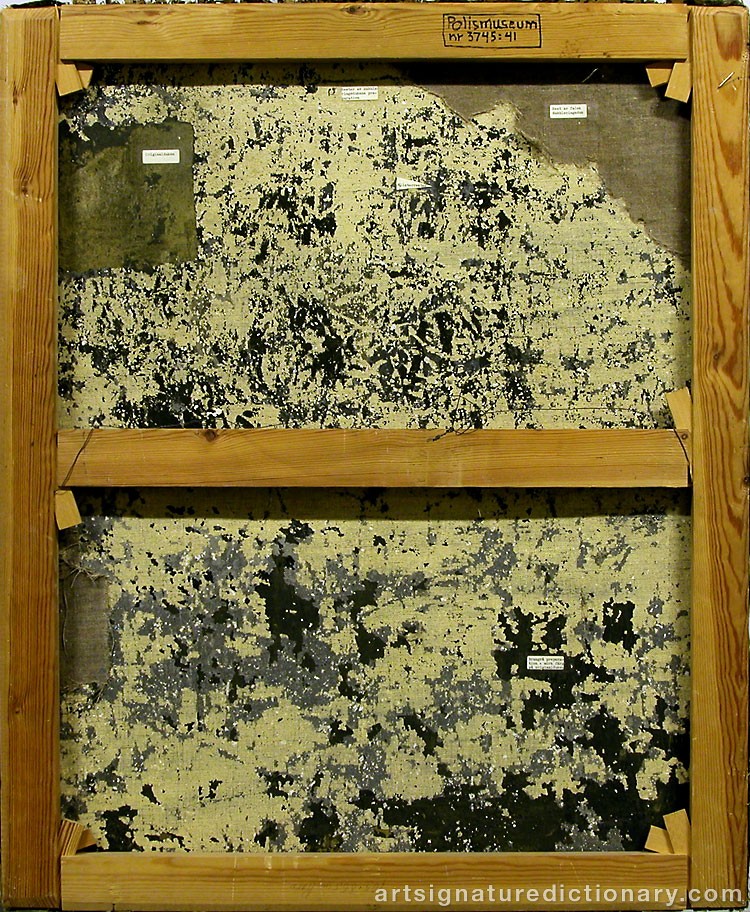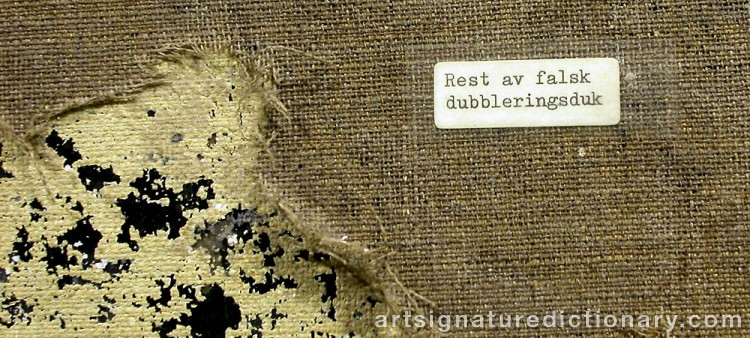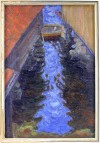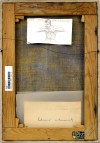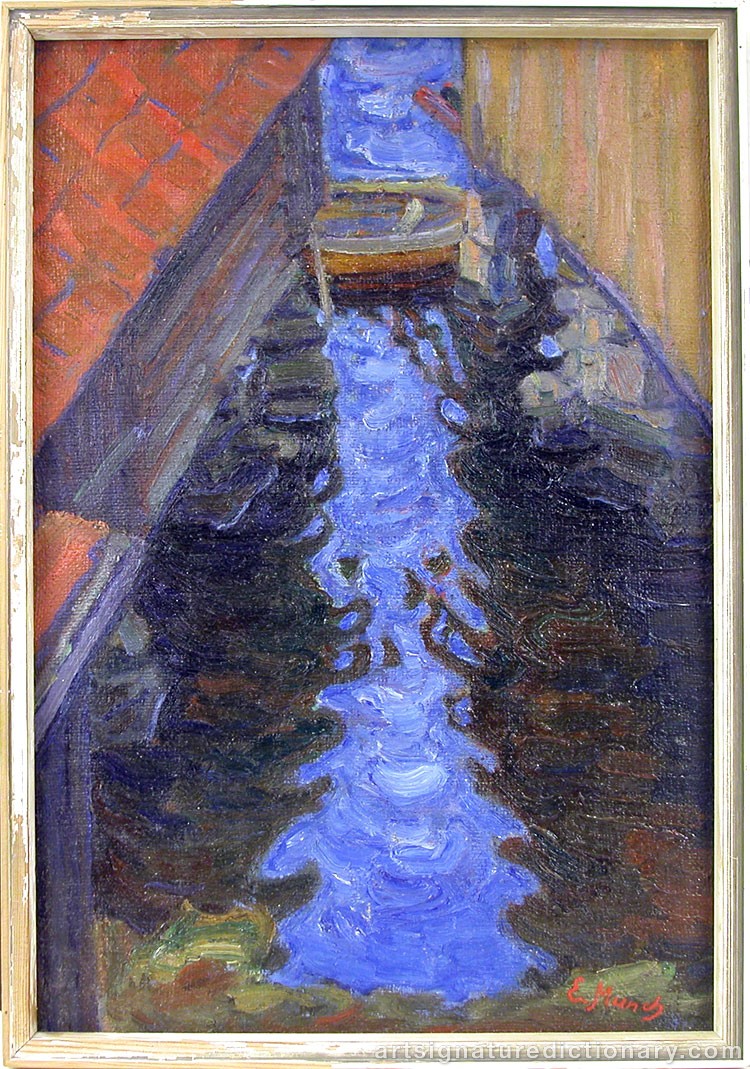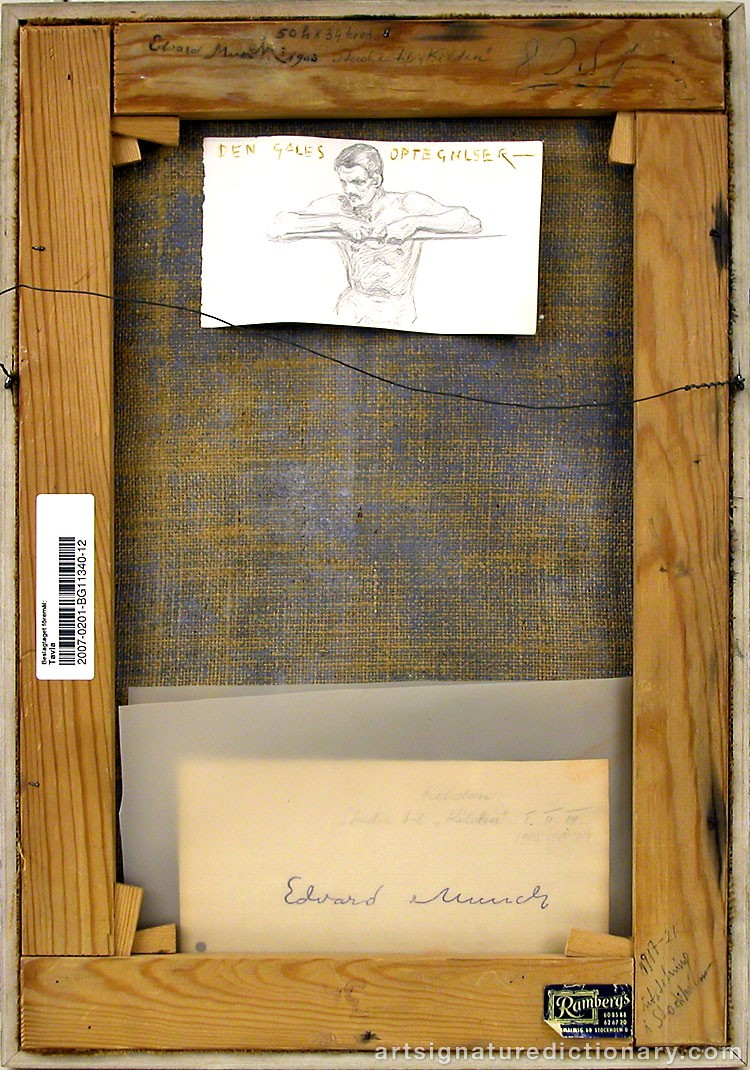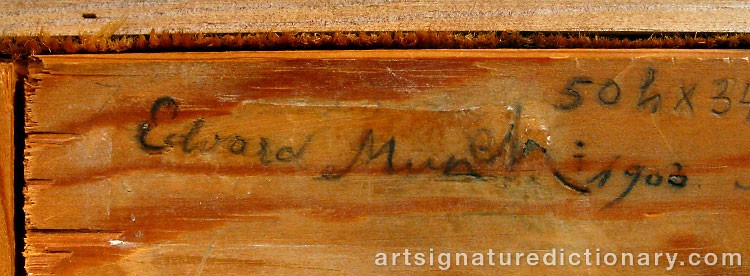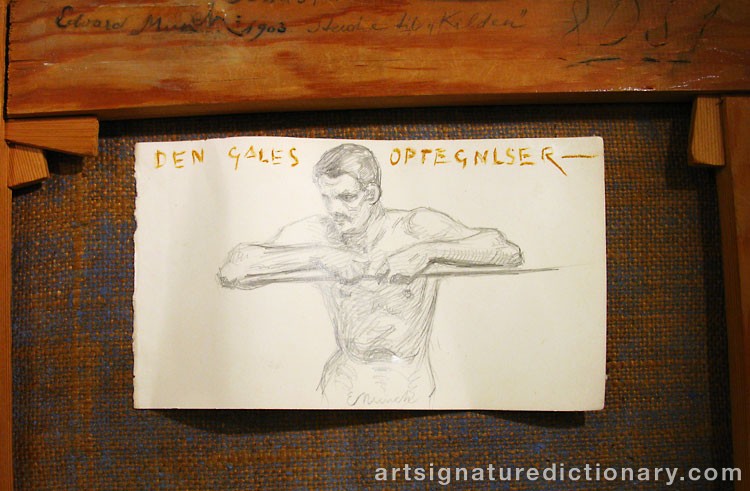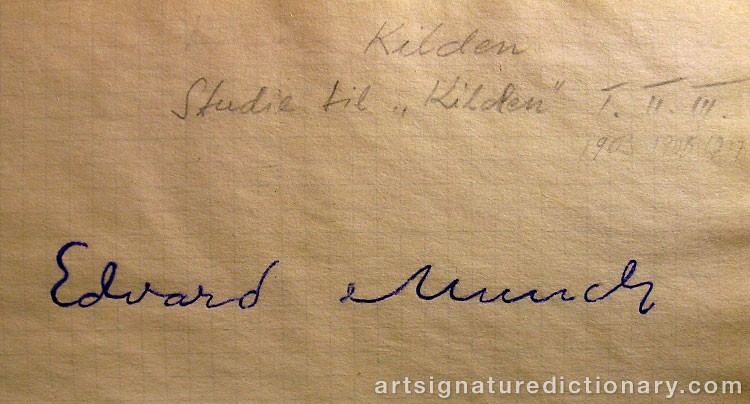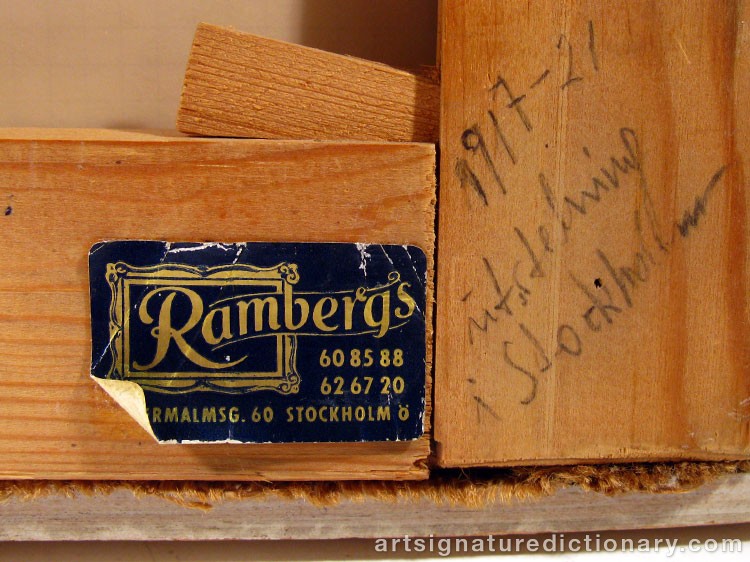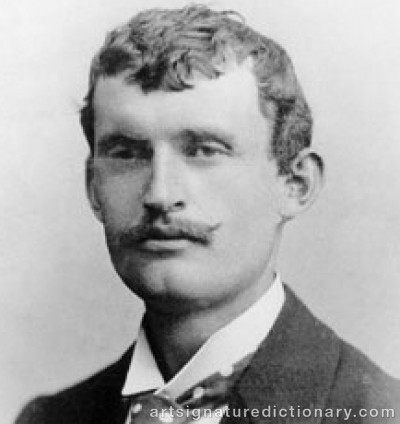
Edvard MUNCH
1863–1944, Norway
Also known as: EM

Signature proven counterfeit
Oil on canvas, motives "Scream", 80x61 cm. The painting was confiscated in the apartment at a person in connection with another seizure of art forgeries, january 2007. Court: Both the paintings and the signature is of such poor quality that it would be beyond any doubt that this is not an original work of Munch. The painting returned to the owner. The painting can be sold at the market again.

Signature proven counterfeit
Oil on canvas, motives "Nude Woman", signed "E Munch", 80x61 cm. The painting was confiscated in the apartment at a person in connection with another seizure of art forgeries, january 2007. Court: Both the paintings and the signature is of such poor quality that it would be beyond any doubt that this is not an original work of Munch. The painting returned to the owner. Warning! There is a risk that the paintings can be re-entering the market.
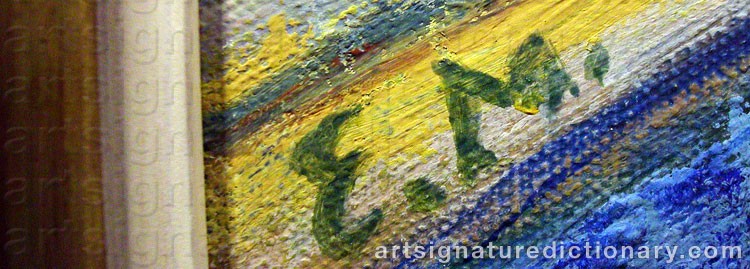
Signature proven counterfeit
Oil on canvas, motive, The girls on the bridge, signed with monogram "E.M.", 46x38 cm. In 1985 the painting was submitted to a major auction house in Stockholm for examination and possible sale. It proved to be a forgery and they contacted police. With the painting followed a fake certificate of authenticity issued in the name John H Langeland, executive director of the Munch Museum in Oslo, and with his signature forged. The owner of the painting said he had inherited it from his father, who in the letter had been written: "At my salon wall is a colouristic gorgeous painting with the following certificates of authenticity:" At the request confirmed that the reverse painting 46x38 cm, is registered in Oslo Municipality's art collections a genuine work of Edvard Munch. Executed in 1905. Oslo January 22, 1964. Johan H Langaard (CEO Oslo's Munch Museum). " Munch made several variations of this subject. At least seven are known. In May 2008, became one of the version of the girls on the bridge Sold at Sotheby's in New York for 30 million dollars, the second highest price paid for a Munch painting. After an expert investigation and judgment declared that the painting is not genuine. It is a forgery.

Signature proven counterfeit
Colour etching, composition with figures, untitled, signed "E. Munch", numbered EA, size 9,5 x15 cm. The police were called by staff at an auction house in Stockholm Sweden on the grounds that they had received two paintings for sale that probably was not genuine. Signed "Munch" and "Dali". During the investigation, stated the owner that she bought the two paintings on e-bay in spring 2013., She had paid 800 USD for Munch and 200 USD for Dali. The investigation concluded that the two paintings were fakes. They are now forfeited.

Signature proven counterfeit
Oljemålning på duk, allé med promenerande figurer, signerad "E. Munch". Skenbart föreställande en äkta målning utförd av den Norske konstnären Edvard Munch. Målningen ingår i ett av de många bedrägerifall som polisen tog i beslag i början av 2000-talet i södra Sverige. Efter expertutredning och dom förklarades att målningen inte är äkta. Det är en förfalskning.

Signature proven counterfeit
Oljemålning på duk, landskap med två figurer, signerad "E. Munch-07". Skenbart föreställande en äkta målning utförd av den Norske konstnären Edvard Munch. Målningen ingår i ett av de många bedrägerifall som polisen tog i beslag i början av 2000-talet i södra Sverige. Efter expertutredning och dom förklarades att målningen inte är äkta. Det är en förfalskning.

Signature proven counterfeit
Oljemålning på duk, kvinna, signerad "E. Munch-21". Skenbart föreställande en äkta målning utförd av den Norske konstnären Edvard Munch. Målningen ingår i ett av de många bedrägerifall som polisen tog i beslag i början av 2000-talet i södra Sverige. Efter expertutredning och dom förklarades att målningen inte är äkta. Det är en förfalskning.

Signature proven counterfeit
Pastel, 79x68 cm, with motif seated woman, signed "E Munch". The painting was submitted to a major auction house in Stockholm for sale. Auction House sent the information about the painting to Munch Museum in Oslo, asking if the painting was known and asked for their opinion. The museum responded that the painting had been examined earlier in 1989. It was then determined that this is not an original work of Edvard Munch. The auction house then took no action, they returned the the painting to the owner because it had been deemed not to be genuine and that the owner himself should contact the police. The owner then contacted the police to get a proper investigation into the painting's authenticity. The painting had been inherited from relatives and on the back is a text of gift dated in 1938. Court: The painting has been provided with a forged signature to appear to be an authentic painting by Edvard Munch. Thus, it is a counterfeit. Note: The Court will judge that the signature should be removed and that a text is applied on the back where it clearly states that "This is not an original work of Edvard Munch." Warning! The painting may enter the market again and there is a risk that it has again been fitted with a forged signature.

Signature proven counterfeit
Oil on canvas, 87x71 cm. Unsigned copy. After an original “Amor and Psyche” by edvard Munch. A forgery of a printed original. The forgers have used a conservator who doubled the painting and manipulated it. Another canvas was glued on the back, on top of the original canvas. The painting was sold for SEK 20000. Included among a high number of confiscated forged art called ”The Society of Art Friends” in Sweden. Three men, aged 30, 37, and 40 years old, were caught in Stockholm, Sweden after a tip off from the police reconnaissance force in Ängelholm, Sweden. Shortly afterwards, another two men were caught. In total, 48 house searches were made through out the nation from which 83 forged paintings were confiscated. Forged art had already been sold for millions of Swedish crowns. Victims of the gang were well known, well to do, businessmen. The gang were aided by art experts who, for very little money, issued certificates of authenticity for a number of the forged paintings. On a door to a flat in Stockholm the men had displayed a sign with the text “The Society of Art Friends”.

Signature proven counterfeit
Oil on canvas, titled "Study for Kilden", size 50x34 cm, signed "E. Munch" and on the reverse dated in 1903. During a search of Mr. 'MS' home in Sweden in October 2007 was found five counterfeit artwork. This oil painting ostensibly picturing a genuine Edvard Munch, an oil painting picturing a genuine works of August Strindberg and a large Mixt media and three smaller color drawings picturing Egon Schiele. "MS" states that he bought the painting in "a place" in the Old Town in Stockholm that would be closed! In the police interrogation of "MS", he says he was able to buy the painting "for an extra good price" for 30,000 SEK, but he can not remember where in the Old Town this happened. He can not even remember the time when this would have occurred. The District Court's judgment: Mr. "MS" has provided the painting with forged signature, provenance, texts, labels and documents with the intent that the painting will appear genuine. Investigation shows that both the painting and the signature is not an original work of Edvard Munch. The crime is serious fraud with intent to lull prospective buyers that this is a genuine work of Edvard Munch. Criminal sanctions, a year in prison.

Signature considered genuine

Signature considered genuine

Signature considered genuine

Signature considered genuine

Signature considered genuine

Signature considered genuine

Signature considered genuine

Signature considered genuine

Signature considered genuine

Signature considered genuine

Signature considered genuine

Signature considered genuine

Signature considered genuine
